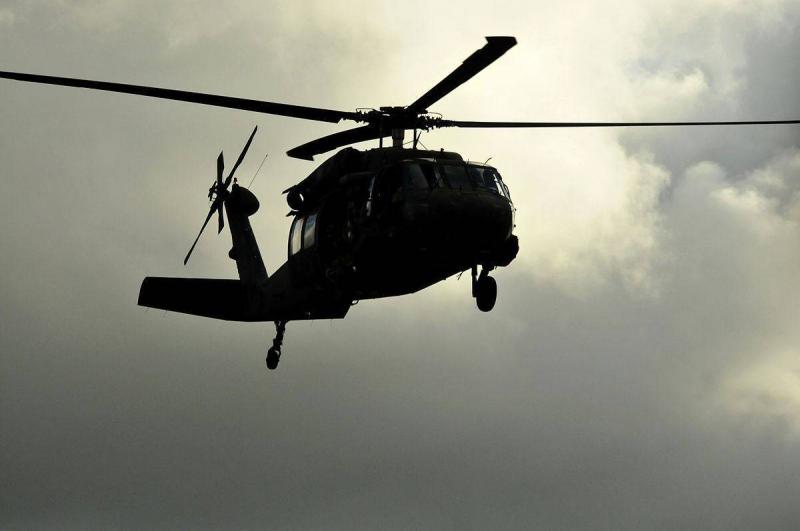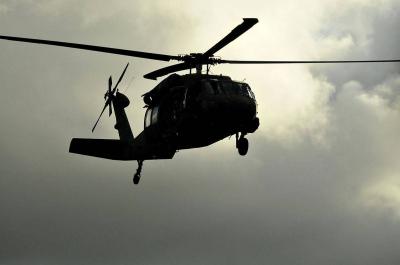Iranian President Ebrahim Raisi and Foreign Minister Hossein Amir Abdollahian died in a helicopter crash in northwestern Iran on Sunday, May 19. Rescuers faced challenges reaching the crash site of the American-built Bell 212 helicopter, which had been dubbed "Hell Wasp" in the 1970s. This is not the only helicopter incident this year, as four helicopters have crashed within 45 days between February and March, resulting in the deaths of pilots and injuries to four others with varying severity, according to *Military Watch Magazine*. Apache incidents occurred on February 12 and 23, and again on March 24, with another helicopter crashing during routine training at Joint Base Lewis-McChord in Washington. On March 26, another Apache helicopter crashed during a training flight at Fort Carson, Colorado.
On April 23, an AgustaWestland AW139 collided with a Eurocopter Fenec over the town of Lumut in Malaysia during a training mission for a military parade celebrating the 90th anniversary of the Royal Malaysian Navy, resulting in the deaths of all ten crew members on both aircraft. Since 2000, hundreds of reported helicopter incidents (publicly acknowledged) have taken place. Such incidents are common even among military aircraft. For example, in April, the U.S. Army ordered additional training across its air force after numerous incidents occurred in 2023. Many of these incidents are classified as "Category A" events, defined as incidents leading to loss of life or loss of equipment valued over 2.5 million dollars.
This unusual number of accidents raises questions about why this type of flying transportation, even in military classifications, is more prone to incidents compared to others, and why it remains favored by officials and in high demand.
**Why Do Helicopters Crash?**
The primary reasons for helicopter crashes stem from their complex structure, which contains countless systems and moving parts that can lead to catastrophic failures if any minor malfunction occurs, depending on the circumstances and conditions of the incident. Helicopters comprise vital components such as the main rotor, tail rotor, transmission, and other mechanical links between parts, each requiring precise engineering, maintenance, and synchronization to ensure safe and effective operation. This complexity increases the likelihood of mechanical failures, in addition to the rotating blades that generate lift and thrust, which are attached to a central shaft linked to the engine and transmission system. This design necessitates advanced control systems to maintain stability during flight and landing.
Experts note that the danger of these components lies in the amplification of failures, where any minor malfunction can lead to larger secondary failures resulting from the initial failure. This failure chain can escalate to the extent that it prevents the helicopter from maintaining stability and balance in the air.
**Bad Weather: A Helicopter's Nightmare**
Bad weather poses a nightmare for helicopters and is among their greatest fears. Analysis of both civil and military helicopter accidents revealed that approximately 79% of these incidents were related to takeoffs or landings, particularly in severe weather conditions, with nearly 40% of civil and military helicopter accidents being weather-related. Helicopters depend on their rotating blades for lift and descent, which makes them naturally more susceptible to wind disturbances since any sudden change in wind direction or speed can significantly affect helicopter stability.
**Why Do Politicians Love Them?**
Despite their frequent incidents, helicopters remain the preferred choice for politicians worldwide, allowing them to travel quickly between locations, especially in densely populated areas or where ground transport is slow due to traffic congestion. Additionally, helicopters can access places that are unreachable by land or other transportation means, such as rural or disaster-stricken areas.
**The Iranian President's Helicopter**
The official Iranian news agency released footage claiming to show "the last images of the helicopter carrying the Iranian president" at the conclusion of the inauguration of the Qiz Qala Si dam, a joint border project with Azerbaijan. According to the footage, the helicopter is an Italian-built, American-designed "Bell 212" UH-1N, one of two of its kind in the Iranian Air Force. The Iranian president had previously used the same helicopter for various events, including a visit to Isfahan where he inaugurated projects in September 2023.
One of the images showed the helicopter's registration number (6-9204) and its serial number (35057), which was manufactured in 1992, according to data from the "Airlines" website, which retains images of the helicopter from 2011 and 2014, while it carried the same registration number with military camouflage before joining the Iranian presidential fleet. The Bell 212 is a medium-sized helicopter with two engines and two rotors, first flying in 1968. It has fifteen seats, one for the pilot and fourteen for passengers, with a wingspan of 14.64 meters, a length of 17.43 meters, and a height of approximately 3.83 meters. It is powered by a Canadian Pratt & Whitney engine made up of two turbines. If one fails, the remaining turbine can provide 900 horsepower for thirty minutes or 765 horsepower continuously, allowing the 212 to maintain performance at maximum weight, and it has an internal capacity of 6.23 cubic meters, with the ability to carry 2,268 kilograms externally.
**Is the Era of Military Helicopters Over?**
With the remarkable advancements in missile defense systems, anti-aircraft artillery, and combat drones, the question arises about the future of the attack helicopter industry overall. Is the end of this weapon approaching? The U.S. military currently possesses about a thousand attack helicopters, the vast majority being Apaches, with 91 of the AH-64 model, each costing about 36 million dollars, which is an exorbitant price.
Each helicopter is piloted by a pilot and a co-pilot, and as demonstrated in the war in Ukraine, neither survives if the helicopter is shot down by a shoulder-fired surface-to-air missile, which exposes the lives of those pilots to imminent danger, unlike remotely controlled drones, for example. Therefore, the ongoing comparison suggests it may be time to abandon attack helicopters in favor of drones.




